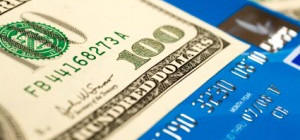 There is nothing worse than waking up and wondering how on earth you’re going to face another day of mounting debt. The debt monster is one that most US households are intimately familiar with. Consider the following statistics about household debt in the US:
There is nothing worse than waking up and wondering how on earth you’re going to face another day of mounting debt. The debt monster is one that most US households are intimately familiar with. Consider the following statistics about household debt in the US:
- Household credit card debt now exceeds $1.022 trillion (November 2017 figures) which make it average $8,117 to each for 126 million issued households credit cards.
- Household non-revolving debt now exceeds $2.804 trillion.
- Total US household debt now hovers above $12.73 trillion, more than the high recorded at the peak of the global financial crisis in 2008 ($12.68 trillion)
- The New York Fed Consumer Credit Panel indicates that 67% of US household debt is mortgage loans, 10% student loans, 9% automobile loans, 6% credit card loans, 4% HE revolving loans, and 3% other loans.
- National credit card debt $1.022 trillion is 38% of total USA consumer debt.
- $24,000 is Avg. debt load at an individual who went to credit counseling at least once and the amount is almost 60% of that person’s annual income.
Within that mix of debt drivers, there is both good and bad debt. Among the worst offenders in the debt propagation cycle, top 2 are automobile loans and credit card loans. Auto loans are often associated with high interest-related charges.
In 2016, some 25% of respondents indicated that a member of their household (typically a spouse) had leased or bought a new car or truck in the past year. Some 67% of households did this through loans. Of those who opted for loans, 12% had a longer repayment period.
US Household Debt Stats
Other interesting statistics about US household debt are the dispersion of debt and the debt burden. For example:
- The burden on credit card debt holders has fallen for people younger than 59, but it has increased for people older than 60.
- An estimated 2 million people between 50 – 64 years old assumed Parent PLUS loans in 2015. This is double the number from 2005.
- 5% of Q4 household debt in 2016 is held by people 60+. This is up from 15.9% in 2008.
- According to stats from 2016, some 41.3% (up from 33.9% in 2008) of all US household debt is held by people with credit scores of 760+.
Effective Ways of Managing High Levels of Debt
For many people, debt appears to be a perpetual cycle. Many expenses don’t typically decrease from month to month, with mortgages, rentals, car payments, maintenance and service, food and education costs etcetera.
However, there are many valuable tools and resources to adapt to decrease variable expenditure items and gain control of debt burdens over time. Here are 4 failsafe methods to reduce the impact of debt on your finances:
- Live beneath your means. This means living frugally, not extravagantly. Extravagant lifestyles cost money are typically adding to the overall debt burden. Cut your cloth accordingly and you’ll quickly see an improvement in your financial predicament.
- Manage healthcare cost properly. Most of us believe that credit card is mostly used for shopping and this is the real reason for exhausting their credit limit. But, according to research, healthcare cost is the no.1 reason behind bankruptcy. Unexpected health-care expenses and medical bills are the real causes behind the consumption of households’ whole credit limit.
- Pay off your high-interest debt ASAP. Every line of credit you have is likely associated with different interest rates. This is standard among lenders. The best rates are typically on mortgages and student loans, followed by automobile loans. Your highest APRs are always going to be on Credit Card debt and payday loans. Get these paid off as quickly as possible.Credit card debts are also known as revolving debt as these are supposed to be paid off every month. The cost savings on repaying high-interest credit card debt are substantial. When you are taking control of debt, you want to hit it hard where it hurts most. Credit card debt is enemy #1.
- Debt consolidation loans are an effective mechanism for reducing the amount you pay on your debt burden. One loan is taken out through a bank or non-bank provider at a lower interest rate than that being paid on the credit cards. Once you’ve eliminated your credit card debt, then put those cards on ice – literally or metaphorically. You’ll be left with a much lower interest rate on the debt consolidation loan. However, always read the T&C of the debt consolidation loans to ensure that you can make the monthly payments on time, every time.
Contributed byhttps://www.myfico.com/







